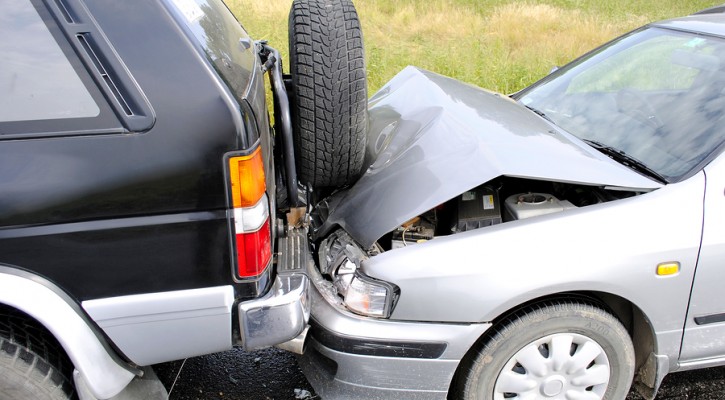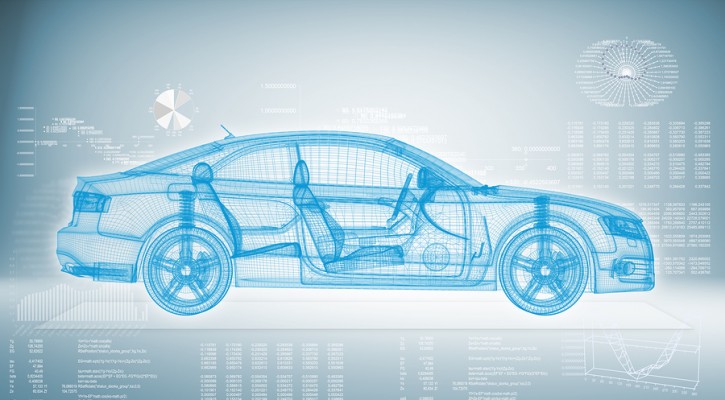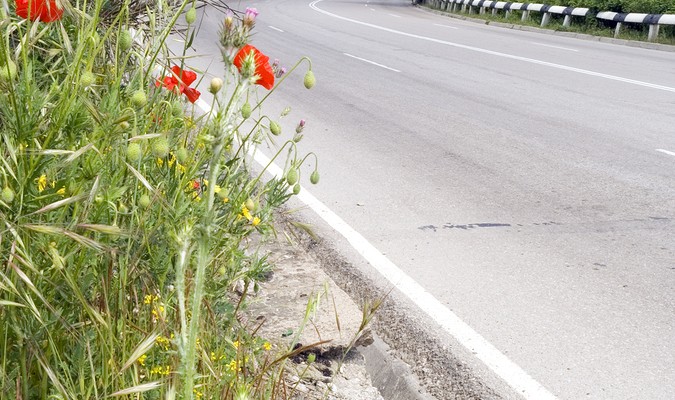Lights, Camera, Action!
March 26, 2014
It took 11 months, 3,000 pictures and a lot of coffee to rebuild his engine. What he did with the images afterwards is a benefit to all of us wanna-be mechanics and future engineers… not to mention Fantasia fans.
Wildflower Road Trip
March 25, 2014
Springtime is wildflower season, which means our nation’s highways will soon be dressed in all the glorious colors of spring season flowers. These little beauties are nature’s promise that winter is over, and that soon the days will be warmer, longer and more beautiful.
If you’re looking for a good wildflower road trip, then look no farther than our nation’s highways. From the western deserts to the grassland prairies to the hill country and alpine meadows, wildflowers can be found all across the country. Here is a list of America’s top ten places to see wildflowers:
1. Antelope Valley Poppy Reserve (Mojave Desert, California)
2. Crested Butte (Colorado)
3. Great Smoky Mountains National Park (North Carolina, Tennessee)
4. Brenham, Texas
5. Shenandoah National Park (Virginia)
6. Cedar Breaks National Monument (Utah)
7. Fort Pierre National Grassland (South Dakota)
8. North Cascades National Park (Washington)
9. Anza-Borrego Desert State Park (California)
10. Glacier National Park (Montana)

Driving in the Wind
March 25, 2014
It’s been windy across the states lately. Learn all about how to drive in high wind conditions from the Illinois Department of Transportation:

Stuck in the Mud
March 25, 2014
The snow is melting, the spring rains are falling, and chances are, plenty of trucks and cars will end up stuck in the mud this spring. Whether you’re trekking down a dirt road or have spun off the highway into a mud pit, these tips will help you get out of that mess and back on solid ground in no time.
Rock Out. You can attempt to “rock out” of the mud by keeping the wheels straight and lightly accelerating back and forth, between drive and reverse. As the wheels start to spin, quickly switch direction, rocking forward and back until you escape the ruts. If you can’t escape, and the ruts only continue to deepen, then try the next step.
Add Traction. Lay dry, solid objects beneath the edge of the tires in the direction you intend to go. Rocks, sticks, boards, gravel or floor mats work well. If you are already dug in up to the undercarriage, then use the vehicle’s jack to lift the tires off the ground. Remember to make sure that the jack is on solid ground, and never get underneath the vehicle while it is jacked up. Once it’s lifted, you can add the rocks, sticks, etc. underneath the tires to both add traction and lift the car out of the mud. It may also be necessary to add traction along the path of your escape route to ensure you will keep on rolling until the vehicle is on solid ground.
Deflate Tires. Use a tire pressure gauge to reduce air presssure. This will greatly increase the traction on mud and sand. Offroader.com recommends dropping between 18 and 20 pounds of pressure per square inch. Once you’re back on the road, don’t forget to re-inflate your tires as soon as possible.
Call for Help. If you have tried it all and are still stuck in the mud, it’s best to just call for help. Usually, a friend with a truck and tow strap is all you need. However, if you’re on your own then there are plenty of services available. Road assistance programs such AAA or Better World Club can get you out in a jiffy. Telematics systems such as GM’s OnStar may be an option. Some insurance policies include roadside assistance, or you can look up the number for a local tow truck service.

Selfies on the Road? Seriously?
March 24, 2014
The selfie craze has made it onto our roadways. As if distracted driving weren’t already an epidemic, selfie-obsessed drivers admit to snapping photos of themselves while behind the wheel. See the full story here:

How to Handle a Car Accident
March 24, 2014
As a beginning driver, it’s best to be prepared for anything and everything. On the top of that preparedness list should be learning how to deal with a car accident. If you’ve been involved in a crash and aren’t seriously injured, then follow this 7-step guide.
1. If possible, move the car to a safe area, such as the shoulder of the road. If the car is too damaged to move, then turn on the hazard lights immediately to warn oncoming traffic.
2. Stop the vehicle and get out, but only if it is safe to do so.
3. Check to see if who is involved and if anyone is hurt. Immediately call 911 if somebody has been injured. Even seemingly minor aches and dizziness could be a sign of something more serious.
4. Call the police. This will provide an objective report to prove who, if anyone, is truly responsible for the crash. If the police can’t make it to the scene, then file an accident report through your state’s DMV.
5. Exchange Info. You will need to get all the information necessary to file a report with your insurance company. Likewise, the other driver will need to have all of your information for their insurance company. This includes:
- Driver and passenger names
- License plate numbers
- Insurance info
- Makes and models of all the vehicles involved
- Contact info for any eyewitnesses
- Location of the accident
- Name and badge number of responding officers
6. Document the Scene. Snap some pictures with your phone or camera. They will come in handy during the claims process.
7. File your insurance claim.
At this point, there are a few different routes to take. Depending on your insurance policy, a tow truck and rental car may be available to you for free or at a discounted rate. If the car is safe to drive, then you can drive home or straight to a mechanic for repairs. Dealing with the aftermath of a crash is never fun, but handling it the right way is sure to make your life little bit easier.
Young Drivers Vs Truckers
March 23, 2014
If you’re a new driver, then chances are you haven’t gained much experience in sharing the road with truckers. You may not realize that driving around an 18-wheeler is different than driving around other vehicles. If so, then this quick rundown on safe driving techniques is for you:
Mind Wide Turns. Large trucks make wide turns, and must swing left before making a right turn, or swing right before making a left turn. So, watch their turn signals and give them plenty of room to maneuver, and never drive between a turning truck and the curb or your car will get stuck.
Avoid Blind Spots. If you can’t see the driver, then the driver can’t see you. If you are driving along the left or right side of a truck, then make sure you can see the driver in the side mirror. If you can’t see them, then slow down or speed up immediately to get out of their blind spot.
Don’t Tailgate. If you drive too close to a large truck, then you won’t be able to see what is happening down the road, and the trucker won’t be able to see you at all. If, for any reason, the truck should need to stop quickly then you are likely to run right into their rear end. Or, if you decide to switch lanes then you will be emerging from a blind spot into a blind spot, which means that if the trucker switches lanes you are likely to get hit. Also, many trucks haul trash, dirt, trees and other debris that could fly out and damage your vehicle.
Don’t Cut Off. It is extremely dangerous to cut off a truck in traffic. It takes a large tuck considerably more time and distance to stop, meaning that your life will be at risk if you must slow down because of traffic or road hazards.
Be Predictable. Make life a little easier for the working trucker by driving like a sane, predictable person. Maintain a constant speed, use your blinkers with plenty of signal time, and slow down gradually, giving others on the road plenty of time to react.
Be Alert. Avoid distractions such as texting or talking on the phone, keep your hands on the wheel and your eyes on the road. Since trucks can’t stop as quickly as cars, any mistakes you make will become more fatal if you are on the same road as a truck.
Be Considerate. People driving trucks and buses are at work. They are there because it is their job. They are not there to make your life more difficult, in fact, just the opposite. Bus drivers are transporting people where they need and want to go. Truckers are delivering the goods that everyone needs and wants to buy. They are all there to make your life easier, so show some respect.

Roadway Safety Foundation Guide for 2014
March 23, 2014
The Roadway Safety Foundation is debuting their guide for improving safety in 2014. Dubbed Roadway Safety: A Primer for Community Leaders, the user-friendly, share-able online document is intended for local officials and community leaders who are in the process of updating their Strategic Highway Safety Plans (SHSP). See the full document here:

Future of Vehicle Repairs
March 23, 2014
The always informative geeks at Wired tested Zero’s electric motorcycle and came away with some interesting thoughts. For one, electric motorcycles are much easier to maintain, that is, until they lose thrust while traveling down the highway because of a computer glitch. For now, Zero will have to recall its 2012 and 2013 models for repairs, however, future models will be able to diagnose and upload quick fixes wirelessly.
In fact, Tesla already has the ability to update its cars wirelessly. The company even made some tweaks to their Model S series last year after repeated incidents of battery fires. Tesla was able to manipulate air suspension to increase ground clearance, and because the cars are so highly-computerized, they were able to do it wirelessly. There’s no doubt that many common issues will be able to be fixed wirelessly in the future. However, there’s also reason to believe that the computerization of our vehicles is causing the need for these fixes.

Springtime Street Smarts
March 23, 2014
Winter is finally over, spring is here, and the roads are beginning to look a little kinder. The snow is melting, the grass is growing and the flowers will be blooming any day now. However, just because we’ve made it through the winter doesn’t mean that the streets are hazard-free. Springtime driving has its own list of dangers, and whether you’re commuting to work and school or planning to travel across the country, it’s important to be aware of the common causes of spring season accidents.
Winter Damage. Snow and ice can wreak havoc on asphalt. Snow plows, salt, sand and freezing water leave behind cracks and potholes, so expect some new road damage as everything begins to melt.
Wildlife. Many animals are becoming more active as the hibernation season ends and mating season begins. Keep an eye out for wildlife on the roads, especially deer at night and early in the morning. When trying to avoid hitting an animal, you can brake but DO NOT SWERVE. Best practice is to tap on your brakes to warn vehicles behind you, honk, and then slow down as safely as possible to let the animal(s) pass.
People. The gorgeous, sunny weather is irresistible to pedestrians and cyclists, making spring one of the most dangerous times to be a distracted driver. Children will be playing in the streets, people will be walking around town and cyclists will be pedaling on every roadside, including those curvy country highways. Spring is also the season of the motorcycle, so don’t forget to take extra caution when changing lanes and making turns.
Weather. Spring weather is a fickle beast. Temperatures can soar up to 80 degrees and drop well below freezing in a matter of hours. Just because it’s warm enough to go swimming doesn’t mean it’s time to unpack to snow gear. Hail season will take its toll in the hail-belt (Wyoming, Colorado, Kansas and Missouri), and flood season will cause dangers across the country. Heavy rains and melting snow make travel especially dangerous for drivers. Wet roads greatly reduce traction and control, as well as increase braking distance. In fact, wet roads are the cause of 75% of weather-related crashes each year.
